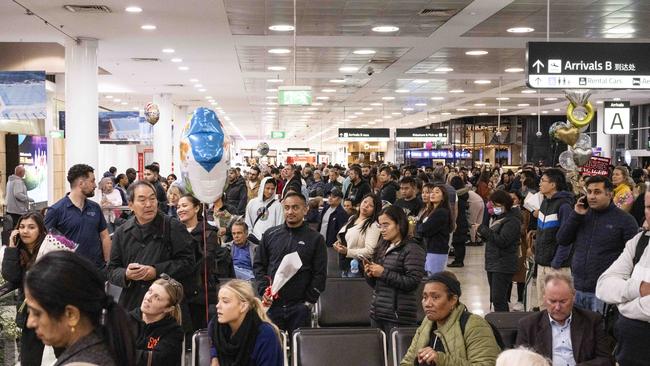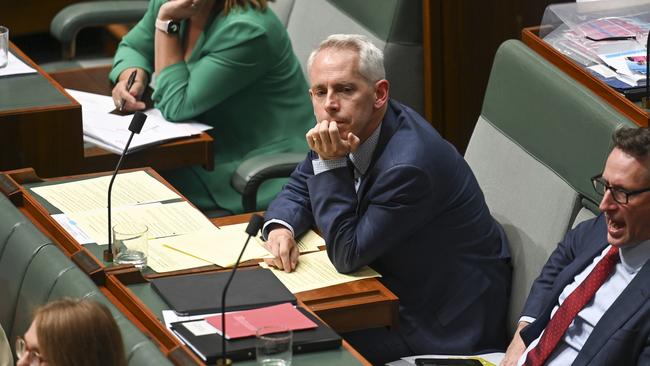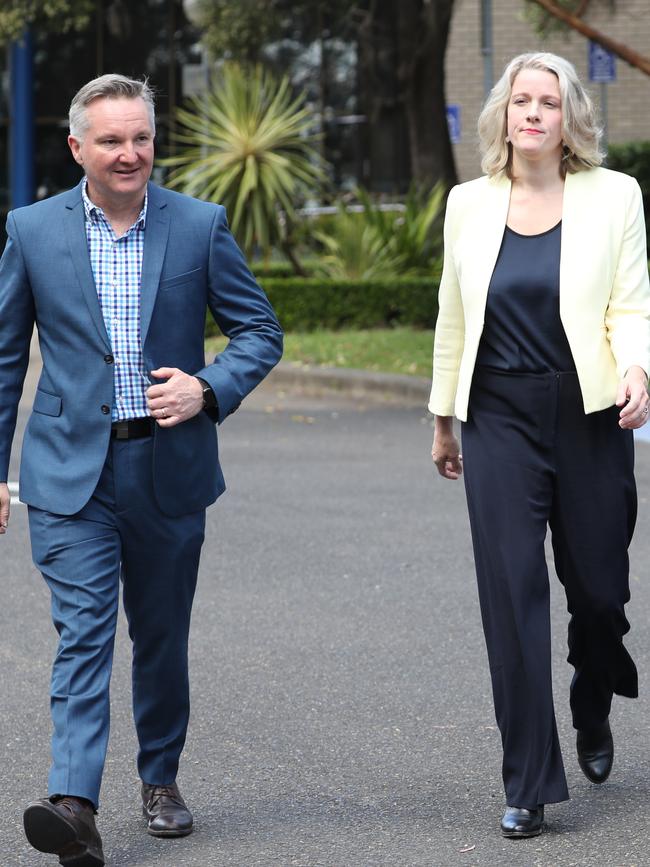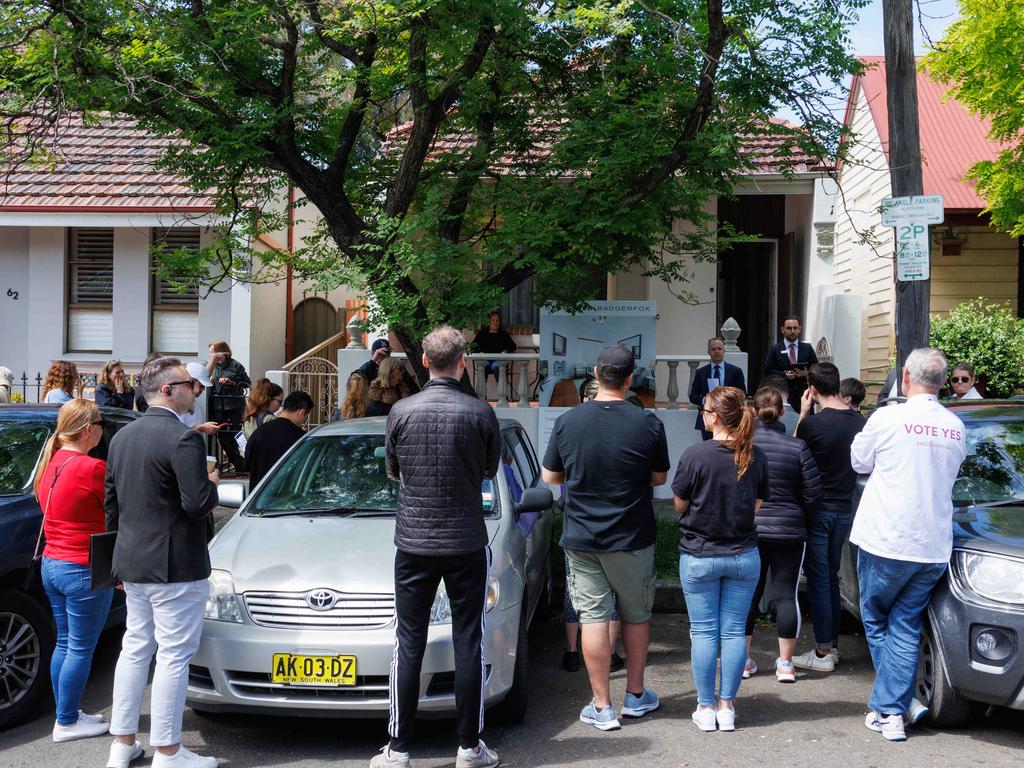
Immigration is a policy area that requires immediate attention lest the large numbers of migrants, both coming and staying, continue to fuel the housing crisis.
With the benefit of hindsight, the government made several missteps in the management of the immigration portfolio. This goes beyond the bungled handling of indefinite detention. Errors include sticking with migration targets set by the previous Coalition government; underestimating the effects of the so-called catch-up after the pandemic; and altering visa conditions to make Australia an even more attractive destination for less skilled migrants.
By throwing more resources at departmental visa processing, it was only several months after Labor was elected that the number of migrant arrivals began to swell.
The key here is net overseas migration: the difference between long-term arrivals and long-term departures. Before Covid, net overseas migration was averaging just more than 200,000 a year. According to the latest figure, NOM was more than 450,000 for the year ending in the March quarter. More recent figures point to annual NOM exceeding 500,000.
In addition to natural population increase – which is only about 120,000 a year – what this means is that close to 600,000 have been added to the population in a year. This is almost half the population of Adelaide and over 100,000 more than the population of Canberra. But migrants largely are heading for Melbourne and Sydney, not Adelaide or Canberra.
International students dominate NOM. According to the federal Department of Education, there were 726,000 international students studying in Australia in January-August, an increase of 31 per cent across the same period last year.
The proportion of university enrolments made up of international students is about one-third overall; it is more than 40 per cent in some cases. For those without direct exposure to higher education, these proportions may come as a surprise.
About 70 per cent of international students express a desire to stay in Australia permanently. To underpin these hopes, Labor has made post-graduation visas more generous, significantly increasing the time visa holders can stay in the country. This is contributing to fewer migrant departures than may have been expected.
Home Affairs Minister Clare O’Neil commissioned a panel chaired by Martin Parkinson to look into Australia’s migration system in 2022. The report was released in April. While the panel was not asked to look at migrant numbers, one of its principal findings was the lack of coherence between the permanent and temporary parts of the system.
With close to two million on temporary visas, the panel concluded: “It is hard to conceive of Australians willingly agreeing to the creation of a ‘permanently temporary’ cohort of workers, akin to guest workers seen in other countries.” The only substantive response to the report was the lifting of the Temporary Skilled Migration Income Threshold from just under $54,000 to $70,000 a year from July. This means temporary workers must earn at least the higher figure to secure a visa. Temporary workers in areas of short supply also have been provided with favourable access to permanent residence.

So working on the basis that NOM is too high and will likely remain so, what are the policy options for government? While it’s likely NOM will fall next year of its own accord, the magnitude of the fall will be insufficient to deal with the economic and political downsides of the net migrant intake.
The options include imposing caps on the key temporary visa categories; levying a tax on international students; altering some visa conditions, including reducing the allowable period of stay for those on post-graduation visas; and further increasing the minimum salary payable to temporary workers. Imposing caps will involve logistical headaches. The rationed numbers would need to be allocated over the year and between applicants. It’s unlikely first come, first served would work.
Higher education institutions will jockey for favourable treatment. Expect the Group of Eight – the sandstone universities – to claim they enrol the best students and need special deals. Other institutions, including regional ones, may argue it’s time they got a higher share of international students and the allocation of visas should reflect this. The government should expect a bunfight among the educated elites working in higher education, some of which we have seen in these pages.
There is discussion of the case for a tax on international students to offset the external costs that migrants impose. Whether such a tax would dissuade many students is not clear, although the direction of the effect is clear. Whether the effect is big or small, there would be gains: fewer international students or a substantial source of new tax revenue to offset the costs.

While it is true the higher education system would lose some revenue that is used to fund research, there are serious question marks over the value of some of this research, particularly in the humanities and social sciences.
The expansion of international student numbers has led to a massive upsurge in research funding rather than being directed to better education for students, both domestic and international.
Jim Chalmers needs his department to undertake some more detailed analysis of the fiscal implications of different NOM levels. Using a set of unrealistic assumptions, Treasury asserts every NOM arrival essentially adds $100,000 a year to GDP, with about one-third being made up of tax revenue. According to this logic, a lower NOM necessarily means less tax revenue.
But the dominance of students in the NOM makes these estimates nonsensical. Most students won’t earn much above the tax-free threshold, so any tax take is trivial. There is also the issue of the costs that long-term arrivals impose, costs that are often picked up by state governments.
The migration system should serve our national interest rather than deliver narrow benefits to businesses and sectional interests.
We are witnessing a significant electoral backlash across several countries to the way in which migration programs have operated.
Unless the size of the migrant intake is scaled back and the system’s integrity improved, there is every reason to think this will happen here.








As the end of the year approaches, the Albanese government faces several major policy challenges. If they are left unattended, there will be a range of adverse consequences, including political ones.